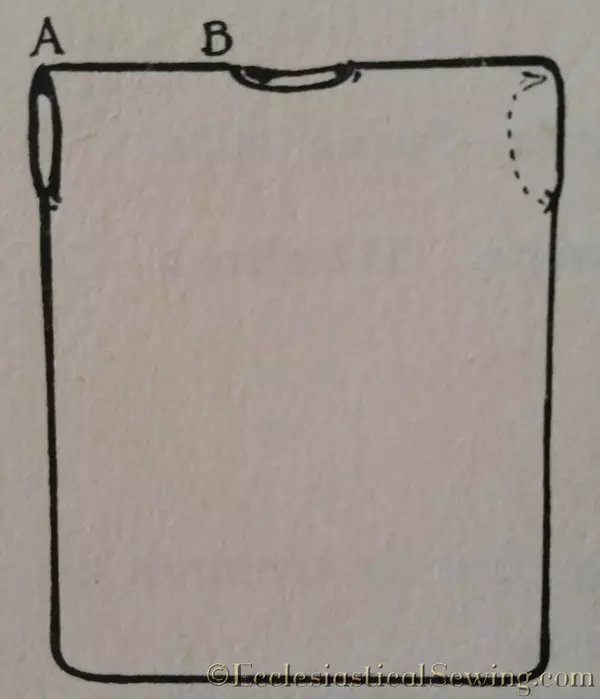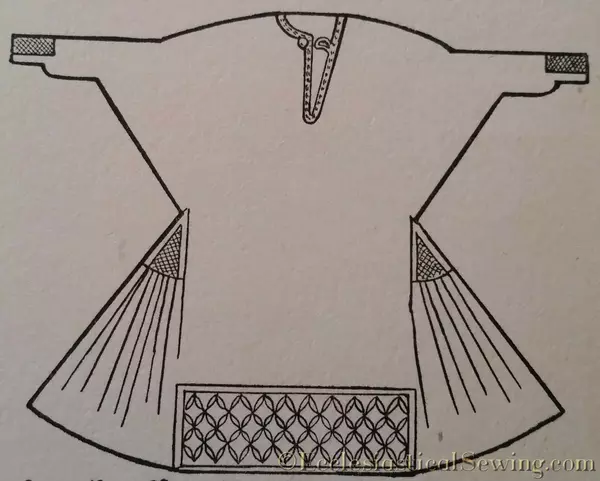The Origins and History of the Alb
The Origins and History of the Alb
The Origins and History of the Alb: The Alb is a vestment that can trace its origin to six ancient garments: the Kolobus, the Tunica, the Colobim, the Tunica Talaris, the Subucula, and finally the Tunica Alba. These garments were common in Greek or Roman times, some garments being used by both cultures. They are not six manifestations of one garment, but rather six that are distinct enough to make note of the differences. For instance, the Colobim had enough fabric at the shoulder to create a sort of sleeve that hung over the upper arm. The Romans refused to wear tight-fitting sleeves–tight sleeves were characteristics of the barbarians–, so when they adopted this garment from the Greeks, they kept the draped sleeves. The Tunica, however, was their preferred garment during the Republic period of Rome. It was sleeveless until circa 270 A.D. when sleeves can be seen appearing on this garment.
1 Norris, Herbert. Roman Tunica Figure 3. 1950. Church Vestments: Their Origin & Development. New York: E. P. Dutton & CO. INC., 1950.
“Those who had adopted the new faith, including women, of course, wore the costume of the people in general.”2 On a further note, Roulin says that the early Christian ministers did not wear distinctive costumes or garments. They dressed in the clothes of everyday Roman life.3 It was not until circa 313 A.D. that the tunica talaris was decreed to be used by deacons assisting in a worship service. After this, we begin to see various other decrees and regulations about clergy dress. This is in connection with the freedom of Christians to openly worship and practice their faith. Christians became conscientious and began to take care of how their worship services were conducted. An important item of care was, of course, the ecclesiastical dress and church vestments.
2 Herbert Norris, Church Vestments: Their Origin & Development (New York: E. P. Dutton & CO. INC., 1950), 16.
3 Dom E. A. Roulin, Vestments, and Vesture: A Manual of Liturgical Art (Westminster, Maryland: The Newman Press, 1950), 4.
History
Norris says that the term alb was first used circa 400 A.D.4 This became the official dress of the ministering deacon and the everyday dress of the bishops and priests. Since the deacon was to wear the alb while ministering, the Council of Carthage did not want him to wear this garment outside of that function. The bishops and priests, who wore other garments while ministering, could wear the alb as their everyday dress. Yet it was not until 589 A. D., the Council of Narbonne, that alb was finally established as a vestment.
4 Herbert Norris, Church Vestments: Their Origin & Development (New York: E. P. Dutton & CO. INC., 1950), 16.
5 Norris, Herbert. Alb Figure 65. 1950. Church Vestments: Their Origin & Development. New York: E. P. Dutton & CO. INC., 1950.
The alb took shape thereafter as a floor-length garment girded, and the sleeves, wrist length, became full and flowing. It did not see a drastic change until the northern European churches were influenced by the Anglo-Saxons. It took roughly three hundred years after the Norman invasion, circa 1300 A.D., for the alb to return to its normal pattern. Since this time, it has hardly changed in form; only small features such as length and decoration have been experimented with on this church vestment.
6 Norris, Herbert. Anglo-Saxon Alb Figure 12. 1950. Church Vestments: Their Origin & Development. New York: E. P. Dutton & CO. INC., 1950.
An important truth that we must remember when dealing with Ecclesiastical Vestments and Vestures is that each piece is not used in isolation. All vestments and vestures come together in a relationship with each other; their individual purposes being necessary as a whole for usage in the church and the worship service. Think of it this way, the priest or the pastor, the deacon and deaconess, and others who serve in the church, do not serve as individuals. Rather they are important parts of the whole. The alb, although unique in history and function, serves as a part of the greater whole of the church. And so, we must not lose sight of the essential purpose of a vestment, such as an alb: a vestment is a garment. In the words of Boulin: “The ancient ecclesiastical vesture, from which derive our present liturgical vestments, clothed a man properly and clothed him tastefully, for the reasons which have been giving.”7 So for a more thorough reading on the alb, I highly recommend the first chapter in Church Vestments: Their Origin & Development by Herbert Norris.
7 Dom E. A. Roulin, Vestments, and Vesture: A Manual of Liturgical Art (Westminster, Maryland: The Newman Press, 1950), 6-7.
~Nihil Sine Deo~
Be sure to visit our online store front Ecclesiastical Sewing where you may shop for Liturgical Fabrics, altar linen fabrics, church vestment-making patterns, liturgical machine embroidery designs, church vestment trims and notions and so much more. You may also find us on Ecclesiastical Sewing on Facebook, Twitter, and Pinterest. Sign up for our mailing list at the bottom of the page on our online store front and receive a free copy of our Small Linens Booklet as our way of saying thank you for following along.
Bibliography
Norris, Herbert. Church Vestments: Their Origin & Development. New York: E. P. Dutton & CO. INC., 1950.
Roulin, Dom E. A. Vestments and Vesture: A Manual of Liturgical Art. Westminster, Maryland: The Newman Press, 1950.
Project Update: Rochet and Monastic Choir Alb
The Pallium-Herbert Norris
Headwear Part II: The Mitre–Norris
Headwear Part III: The Tiara–Norris
The First Chapter of a New Book
What is a Tippet: Church Vestments
Elizabeth – Watts and Co
Save









 RSS - Posts
RSS - Posts
You must be logged in to post a comment.